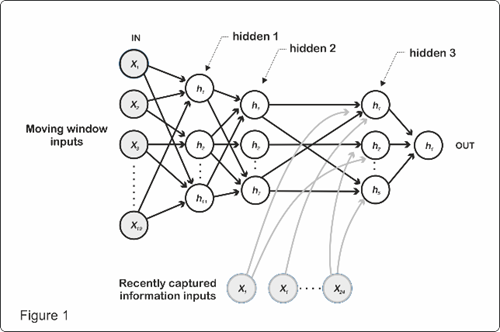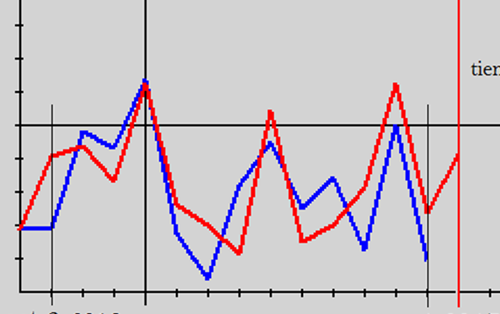Deep learning in Yachay City of Knowledge
/figure1_2.png)
Deep Learning
Deep Learning (DL) is a big issue and all the great companies in advanced technology are working hard on it. The Google Group, for instance, has amazed the technological world with Google Brain, a venture based on DL capable of object classification and natural language processing. Other heavyweights like Facebook use DL techniques that enables machines to learn to classify data by themselves. This is important when you have 1.2 billion people uploading 136,000 photos and updating their status 293,000 times per minute. In medicine, deep learning is helping researchers to analyze medical data, treat diseases and enhance doctors’ ability to analyze medical images. The list of current DL applications goes on and on.
An attractive feature of DL is that all it needs is software developers, a fertile growd for our young engineers, and computers, which become cheaper by the day.
Deep learning in Yachay City of Knowledge
IT-Empresarial is a spin-off company of Farmaenlace, based in the Scientific and Technological Park of Yachay City of Knowledge, Ecuador. It is dedicated to the analysis, design and implementation of software solutions, being innovation its main component. Following this premise and the technology-based ventures promoted by Yachay Public Company, since May of 2016 we started a project called Deep Predictor, where Deep Learning software, developed by our own group, is being used to forecast the sales of pharmaceutical products.
Deep Predictor
With more than 500 outlets and 3000 different products our distributing center CEDIS in Quito represents quite a challenge for any inventory administrative system, whose objective is to minimize the inventory cost and maximize customer satisfaction. The intelligent software that we are working on allows the training, with products sale data, of multilayer artificial neural networks. During training, the system performs data mining, concentrates information and creates its own predictive conclusions.
Figure 1 (see above): Deep Predictor. Five layers of artificial neurons are trained with pharmaceutical products sale data end deep learning techniques. After training the network can forecast week sales with up to 92% of success for some products.
For some products, the system produces one week look ahead estimates with up to 92% hit rate (figure 2), where even peaks and valleys are well anticipated. For other kind of products, the hit rate drops to 54%.
Figure 2 (see below): A successful Forecasting Journey. Using three years of stored sales information, the Deep Predictor is set to forecast the sale of one pharmaceutical product, one week ahead, for 12 consecutive weeks. The red line represents the prediction, the blue line the actual sale. For this example, the hit rate is 92% with a ±10% of allowed deviation.
Right now, we are working a in a pilot project that includes 58 products in one pharmacy, which are weekly forecasted and checked for exactitude. We actively interchanging ideas with our experts in the CEDIS to use the predictions to improve our dispatch formulas.
In a near future we expect to expand this universe to thousands of products and hundreds of sales points. In order to cover these new demands we are forming an internal team in parallel computing and are participating in the activities of the supercomputer work group that operates the IBM-QUINDE 1, one of the most powerful supercomputers in the Latin-American region, which has been installed in the Scientific and Technological Park Yachay, as part of its key technological infrastructure.
/)



/canvascolor(0xffffffff)/MemberLogo-75801-6122.jpg)
/canvascolor(0xffffffff)/2019_11_12_China_Tuspark_(Jiangsu).png)
/canvascolor(0xffffffff)/IT_park-01_1.png)
/canvascolor(0xffffffff)/MemberLogo-55602-27601.jpg)
/canvascolor(0xffffffff)/2018_10_31_Canada_Quebec_International.png)
/canvascolor(0xffffffff)/2017_08_07_HHTP.png)
/canvascolor(0xffffffff)/WMV_logo_PNG_2024-03-03_14_03_12_1.png)
/canvascolor(0xffffffff)/Untitled_11.jpg)
/canvascolor(0xffffffff)/New_Logo_sapiens_(1)_page-0001.jpg)
/canvascolor(0xffffffff)/LSP_Logo_vertikal_blau_sRGB.jpg)
/canvascolor(0xffffffff)/2020_09_09_Sweden_Luleea_SP.png)
/canvascolor(0xffffffff)/Andorra_RGB_RI-1_1.png)
/canvascolor(0xffffffff)/ParcBit_logo.jpg)
/canvascolor(0xffffffff)/2025_01_30_The_Netherlands_Noviotech_campus.png)
/canvascolor(0xffffffff)/PCT-GUAM_-LOGO-NORMAL_1.png)
/canvascolor(0xffffffff)/buildings2.png)
/canvascolor(0xffffffff)/MemberLogo-5669-6104.jpg)
/canvascolor(0xffffffff)/2023_10_09_Brazil_PCT_UNICAMP.jpg)
/canvascolor(0xffffffff)/logo_29.jpg)
/canvascolor(0xffffffff)/AMTZ_Updated_Logo_2.png)
/canvascolor(0xffffffff)/Saigon_Hi-Tech_Park.svg_9.png)
/canvascolor(0xffffffff)/2023_07_14_Saudi_Arabia_LAB7_Aramco.png)
/canvascolor(0xffffffff)/2017_11_21_UK_Univ_of_Warwick_SP.jpg)
/canvascolor(0xffffffff)/2024_04_24_UK_UNIP.jpg)
/canvascolor(0xffffffff)/WhatsApp_Image_2023-08-01_at_14.01.59_5.jpg)
